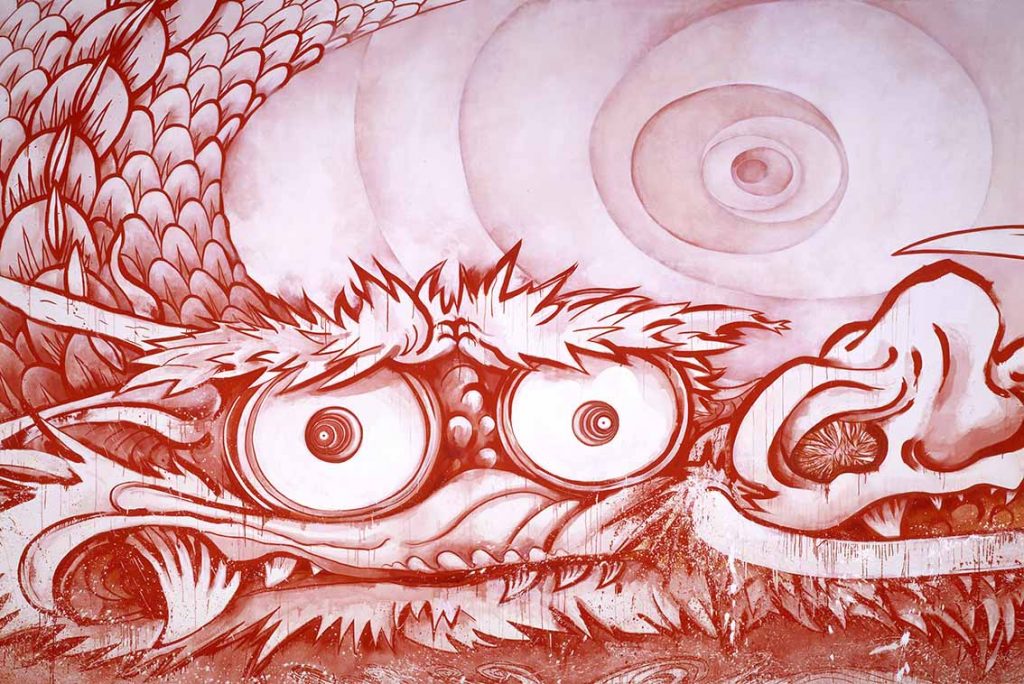Unfortunately, eccentrics are ofttimes underrated – or overlooked. Socially, they can be considered unstable and therefore, somehow, unacceptable – that is if one is under the thumb of bourgeois morality. In the American South, however, family eccentrics are a point of social pride and they are both nurtured and encouraged.
It is all a matter of perception and it is the same in the world of art.
Outside-the-box thinking almost always becomes important junctures in art history, more so as time goes on and people become more removed from the mores at the beginning and are able to see matters without excitable morality. Nothing seems to be more tedious than more of the same. The question to be raised is just where would art history be without its eccentrics, especially in the field of painting? Asia certainly had its share and the most famous Chinese artist of this style is certainly Bada Shanren. Who cannot be taken with and amused by his paintings of a bird, usually a kingfisher, perched cockily on a lotus stem with a large eye set akimbo.
In Japan, Soga Shohaku (1730-1781) certainly takes first place as an eccentric and enigmatic artist, frequently scorned at the time for his revived use of Muromachi style brushwork which was no longer in fashion. He was considered an eccentric, not a flattering name at the time, if not mentally unstable. Muromachi paintings, landscapes and otherwise, made great use of the tonal contrasts created by a heavily-loaded brush, sometimes used as dramatic accents for parts of a composition. Shohaku has never been classifiable to any one school of painting and was very much his own man because of that.
The exhibition opened on 18 October, for a deservedly long run, until 1 April next year. The display of works by Takashi Murakami, born in 1962, boldly shows a singularly eccentric style that cannot be confused with any other Japanese artist working today. He has most certainly taken up Shohaku’s mantle. And together with Professor NobuoTsuji, has chosen the objects on view, including three iconic works of art in the MFA’s collection, which he used as subjects of his revised sense on how they can be perceived and dynamically revised. The original three are Dragon and Clouds, a 1763, thirty-six foot long, eight-fold screen by Soga Shohaku; a Heian Period wood sculpture of the Historical Buddha /Shaka/Shakyamuni; and a Kamakura period handscroll, Night Attack on the Sanjo Palace from the Illustrated Scrolls of the Events of the Heiji Era. In the order above, Murakami’s depictions of the originals range from the recognizable to the semi-recognisable to the completely unrecognisable.
His 2010 version of Dragon and Clouds is entitled, humorously, Dragon and Clouds – Red Mutation, ‘The version I painted myself in annoyance after Professor Nobuo Tsuji told me “Why don’t you paint something yourself for once?”. Executed in red and tones of pink and using strong linear outlines, à la Shohaku, he has created an image of an almost humorous creature that could almost pass as a Muppet. One step down the recognisable scale is his depiction of the Buddha. He has correctly presumed that the MFA sculpture was probably raised on either double-lotus or architectonic throne and was backed by a glorious nimbus. Murakami’s 2008-2011 silver sculpture Oval Buddha Silver, is raised on a disproportionally tall throne that does resemble a ribbed chalice. The nimbus, instead of being behind the figure in the traditional manner, is depicted almost like an umbrella, and although unintended, it does resemble a pre-World War II automobile mascot.
The one interpretation than cannot be explained without knowing what was the original design is the 2009 Lots, Lots of Kaikai and Kiki, a design on a massed field of Kaikai and Kiki heads, the emphasis being on the mass of individual images, rather than the individuals themselves. Knowing that the original inspiration is the MFA’s Kamakura period handscroll, Night Attack on the Sanjo Palace from the Illustrated Scrolls of the Events of the Heiji Era, the connection between the handscroll and Murakami’s version now makes some sort of sense.
The artist deserves kudos for his remarkable, far-reaching imagination and his ability to have connections with the past that are rarely,
if ever, imagined.
BY MARTIN BARNES LORBER
Until 1 April, 2018, Museum of Fine Arts Boston, mfa.org







